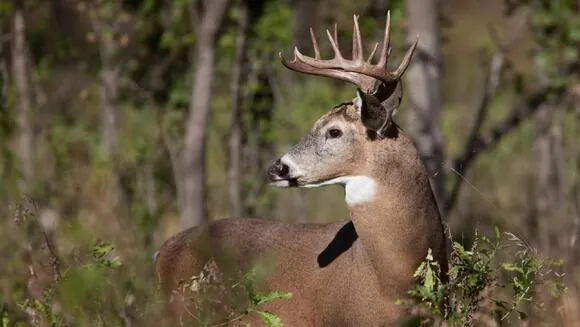Do You Think You Know Where That Buck Is Bedding? MSU Deer Lab Study Reveals Big Bucks Bedding Habits
In the Midwest, it is relatively easier to identify and take advantage of bedding areas on one’s property or hunting land by simply looking at a map. However, when it comes to other regions, such as this one, it becomes more challenging. The key takeaway here is that in this particular area, one cannot rely solely on a map to pinpoint and make use of bedding areas.
Mississippi Clarion Ledger
You may think you have a good idea of where that big buck is bedding, but the truth is, it’s not always as clear-cut as it seems.
Researchers from the Deer Lab at Mississippi State University have conducted a study on the movements of mature bucks equipped with GPS collars. The study reveals that these bucks have the ability to bed down in numerous different areas within a month’s time. Interestingly, a significant portion of these bed sites are only used once before the bucks move on.
Big bucks are known for their promiscuity, meaning they tend to spread their wealth around.
Bronson Strickland, from the MSU Deer Lab, explained that the research originated from a single idea.
Strickland said they aimed to challenge the concept of the “buck’s bedroom.”
In the Midwest, bucks often have a designated area for bedding, known as the “buck’s bedroom.” This concept becomes more relevant due to the limited availability of suitable bedding areas in this region. However, the Southeast contrasts this pattern as there is an abundance of suitable bedding sites available.
GPS collared deer provide answers
According to Strickland, the data set is referred to as the Big Black River.
The study conducted along the Big Black River in Yazoo and Madison counties from 2017-2019 provided the data set. Researchers equipped fifty-five mature bucks with GPS collars to monitor their movements and observe their response to hunting pressure.
The comprehensive data set uncovered additional insights. It revealed that numerous bucks exhibit dual home ranges, with some of these ranges being located several miles apart. For instance, Buck No. 27 had home ranges that were approximately 14 miles distant from each other.
The data we have now is providing us with valuable insights.
Bucks using dozens of bedding sites
According to Strickland, bedding sites are spots where bucks come to a halt and remain stationary for at least an hour. In a study involving 10 fully-grown bucks in November, it was discovered that these bucks utilized an average of 39 distinct bedding sites, often separated by more than a mile. Interestingly, it was observed that 20% of these locations were only utilized once within the given timeframe.
Bucks were observed to utilize multiple sites within a single day, and interestingly, all of these sites shared a common characteristic.
According to Strickland, bucks choose bedding locations that offer waist-high structural cover, such as grass or palmetto, to ensure they are hidden and protected while resting.
It is unclear why they utilize numerous bedding sites, but there is speculation that it may be to reduce their vulnerability to predators, including hunters.
More deer research coming
According to Strickland, the key point to note is that it becomes more challenging. He explains that unlike the Midwest, where one can easily locate a bedding area and capitalize on it by simply looking at a map of their property or hunting land, this is not the case.
According to Strickland, it should be noted that the level of hunting activity in the study area is relatively low. This implies that the behavior of animals when it comes to finding a place to rest may vary in other regions.
According to Strickland, it is possible that in heavily hunted public land areas, deer are becoming more aware of human presence and are adapting their behavior accordingly. They may be deliberately staying in areas that are heavily hunted in order to avoid encounters with humans.
Researchers are eager to delve deeper into various aspects, including comparing bedding habits in low-pressure areas and high-pressure areas.
According to Strickland, there is more to come from this situation and he advises everyone to stay tuned for further updates.
More News:







